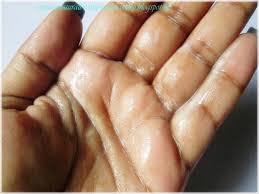Nurses do plenty of hand washing at work, so they can take it a bit easier on their digits at home. Soap and water is a fine disinfectant (the Environmental Protection Agency says so), and anti-bacterial soaps and liquids are not needed for a true clean. In fact, taking a break from them at home can help them remain effective while you’re at work.
According to the Environmental Protection Agency, these are the six main reasons to ditch harsh ready-to-use products for cleaning and disinfecting:
1. Skin irritation — chemicals may lead to redness and swelling.
2. Air pollution — limit volatile organic compounds (VOCs) as they’re tied to eye/nose/lung irritation and asthma attacks. Plus they add to smog in the atmosphere,
3. Fragrances — artificial scents don’t help boost cleaning, they may be harmful to your health, and they increase indoor air pollution.
4. Dyes — like added scents, unnecessary dyes don’t help and may even harm health. Avoid additives when possible.
4. Packaging — it uses up natural resources and adds to garbage waste; look for limited packaging or the use of recycled/recyclable materials.
5. Concentrates — they reduce packaging, but pose greater health and pollution threats.
One of the easiest ways to make a big impact with household cleaners is to make your own disinfecting hand cleaner.
DIY Hand Wash Disinfectant
Plant-based liquid soap (4 ounces)
Dr. Bonner’s Castile soap or other brands are available widely, at big-box retailers to health food stores.
Tea tree oil (10 drops)
An essential oil has antibacterial and anti-fungal properties.
Add the tee tree oil to the castile soap and stir it in then pour into a pump-style empty bottle. (You can recycle hand lotion containers, etc.)
Enjoy!
Jebra Turner is a health writer in Portland, Oregon — visit her online at www.jebra.com.
- Resumes, LinkedIn, and HR Portal Profiles, Oh My! - May 22, 2020
- Weight Management for Nurses: The Why’s and How’s of Losing or Maintaining Weight - February 18, 2020
- Mindfulness and Wellness Programs for Patients - October 14, 2019



